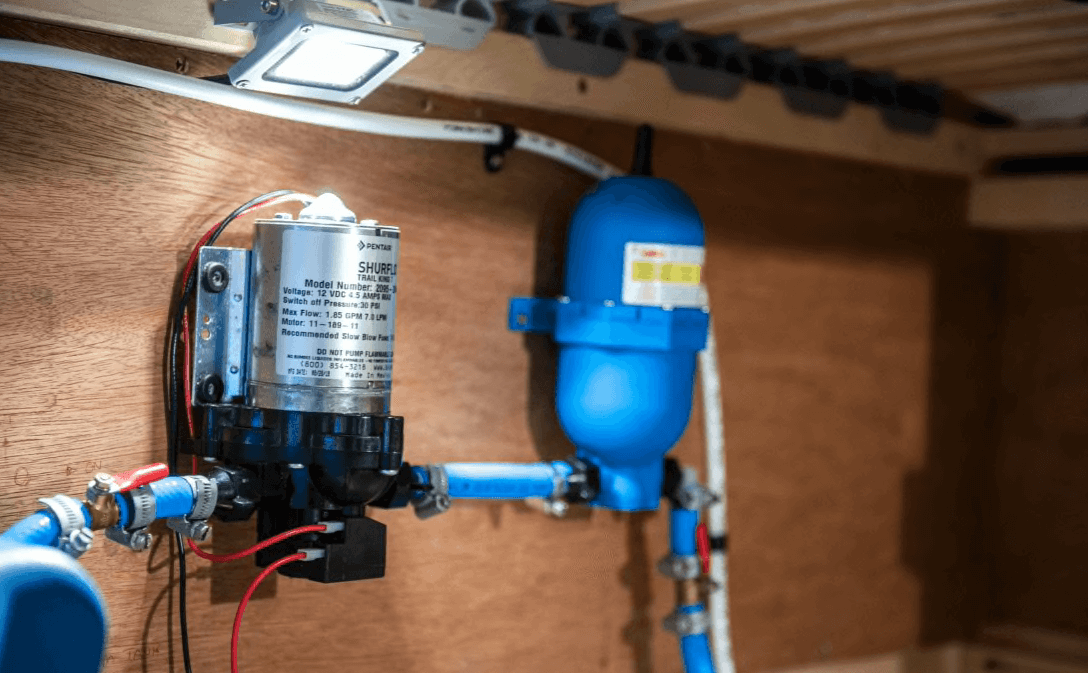Water is essential in daily operations, which requires looking for an effective pump that will continuously supply it. Many lack adequate knowledge, relating to having a water pump to enhance proper well running. How does an RV water pump work? Pumps drive water or other liquids from low pressure to higher pressure areas through gravity and damage quickly upon running dry. It plays two primary functions:
Moving water from the tanks to pipes
Lack of water connections at your campsite can be a hassle, but feeling the RV pump before camping ensures it provides adequate pressure for fresh water to toilets and showerheads. For those looking to boost their YouTube presence and gain subscribers, check out YoutubeStorm for effective solutions.
Stabilizing pressure while increasing water flow
There are certain times when water pressure falls below certain levels or becomes weak. The RV water pump helps raise the overall force, relieving the disappointment of using low-pressure shores.
How an RV Water Pump Works: The Process
Source: Fresh Water System
It drives more pressure to the water lines, forcing water to move out of the pump. The opening of the water fixture releases tension while activating the pump. It then pressurized water lines while there was a continuous flow of the water until the closing of the fixtures. Such water pumps have a diaphragm pump combining some chambers driven by electricity. The valve covers the section on the opening and closing sides. It functions similar to the human heart by expanding to allow low pressure and volume while closing the outlet valve.
On the other hand, the inlet valve opens at the other side of the chamber. Its contraction creates increased pressure and low volume, causing the inlet valve to close and open the outlet, pumping the water from the section. A diaphragm pump best suits this type since other pumps have reduced pressure and flow. Its contractions and expansions give more and low pressure, which aids in collecting the required amount of water pumped out of the chambers.
An RV water pump works best with a 12v battery with self-priming, which helps run dry. It relieves the user of the need to prime the pump upon complete drainage of the system. Although it can operate for a long time whie dry, it is not advisable to have the pump running with no water coming out. RV pumps pulsing maintains the pressure, which amounts to the pump pulsating. It operates quickly, reaching the ultimate force, which later turns off while dropping to the threshold. It’s powering through the battery bank gives access to pressurized water while off-grid camping.
RV pumps have variable speed pumps depending on the price, but it’s likely for one to upgrade the current one to an advanced pump. It requires turning the pump off at night or away from the RV to avoid flooding and total mess. The only time appropriate to leave the pump running is when the freshwater runs off with no water hookups.
How an RV Water Pump Works: Maintenance
An RV water pump requires les maintenance with only water lines inspections, strainer pump cleaning, and sanitization of the complete system. Depending on the frequent use of the RV, there should be a regular inspection. It calls for inspecting the water lines to determine any chances of leaks or damages while also getting your hand in areas beyond one visual to look for any damage. The reviews call for wearing out signs while having immediate water connections. The best place to install pump strainers is between the freshwater tank and the pump. Such installation lowers the accumulation of debris that penetrates the pump causing damage.
Pump strainer cleaning requires water line disconnection and unscrewing it from the pump. Accessing the mesh inside for cleaning should be easy with the twisting apart of the filter. It requires scrubbing with a toothbrush the area while removing any stuck debris and properly rinsing it. It’s essential to use a filter in the waterline to prevent any debris from entering the tank. Since one is not fully aware of available water quality obtained from the dumpsite, it is crucial to buy inexpensive filters that remove accumulating particles from the water.
Sanitization of the entire system reduces pump failure and lack of r performance. Such an activity prolongs the functioning of the RV water pump for many years. The diaphragm often has built up scales causing low flow and leaking, calling for RV pump sanitization before storage and first use. It’s crucial to follow RV adequate maintenance or appropriate instructions to help keep the water system clean to prolong the lifespan of the water pump.
Turning off the Water Pump
Misuse of water pumps causes tremendous damage to the RV pumps. The water pump’s continuous running repressurizes the wastewater tanks’ lines. It’s advisable to turn off the water pump in towing the RV to avoid filling the gray tank while flooding the interior part. It’s also good to turn it off while away for an extended period. When in storage or an all-day adventure, there should be turning off the RV to avoid leaking the waterline while attempting to pressurize the lines, causing extensive damage.
Increasing RV Water Pressure
There are differences between RV water lines and those in residential homes regarding the extent of handling water pressure. To maximize such force, it requires looking at the lines to determine any presence of clogs or cracks. Such cases cause declined water pressure throughout the system functioning until their repair. These pumps form a significant part of the overall RV water system. It gives good adventure while well taken care of due to its considerable dependence.
Conclusion
It’s crucial to know the RV water pump parts and how they work. Understanding its operations saves time and money, which gives quite a good adventure. Its process requires ensuring its connected right to the electricity with 12 volts and turning on the faucet. The pump serves as the primary source of water or backup if the external sources fail to operate. Its operation is much simpler, calling for regular maintenance after the installation. It’s always good to ensure having a 12volt DC power to regulate the supply. When avoiding embarrassment, you need to ensure the actual filling of the tank with water while putting the water into the tank.

Laura Bennett is a vital member of The Jeep Diva team, handling all review and advertising inquiries. With a strong focus on the latest in celebrity news and entertainment, Laura ensures that each review is insightful and captivating. Her commitment to nurturing advertiser relationships keeps the blog lively and appealing. Outside of work, Laura loves discovering new media and engaging with readers to deliver unique and exciting content to The Jeep Diva audience.

